
Imago
Iowa Race

Imago
Iowa Race
In recent seasons, inspection failures have become a recurring storyline in NASCAR. Often, it has happened that half the field has struggled to clear pre-race checks on the first attempt, ultimately leading to loss of pit stall selection or car chief ejections. Worse, even post-race disqualifications. And since 2018, NASCAR has tightened enforcement with tools like its Optical Scanning Station (OSS), which checks a car’s body with extreme precision, down to fractions of an inch. And because these margins are so tiny, any small deviations in them can lead to failures, which ultimately frustrate the fans who blame the team’s deliberation behind it. But the root cause is not always misconduct.
Watch What’s Trending Now!
The perception-versus-reality gap around inspections has only widened with incidents across the 2025 season. Teams such as 23XI Racing and Front Row Motorsports faced multiple inspection failures at Kansas. Meanwhile, Ryan Preece and Joey Logano were disqualified at Talladega after top-five finishes. This was due to technical violations involving spoiler components. These headlines often feed into a narrative of intentional rule-bending. But in reality, the razor-thin tolerances used in modern inspections have left teams walking a fine line. That reality sets the stage for why one NASCAR insider recently described these limits as nothing short of “ridiculous.”
ADVERTISEMENT
The hidden challenge behind NASCAR’s inspections
Cherokee Hall, a junior project engineer at 23XI Racing, explained the challenge behind these inspections during The Racing Writer’s Podcast. She pointed to the narrow thresholds, saying, “People don’t realize that the tolerances are like 0.00001, a very, very small number and minute number.” Hall described how even before a car reaches the track, shop engineers face a constant battle to keep measurements in line. To her, the margins leave little room for error. What appears fine in a controlled shop can shift outside limits when exposed to real conditions. That means many inspection failures are born not from cheating, but from the inherent sensitivity of the system itself.
Hall then addressed another key element that plays a role in this. “You’ll see teams walking around with umbrellas. And the reason they walk around with umbrellas is because the heat and the sun. Everything like that… if something’s cold, if something’s hot. It alters the shape of the metal.” NASCAR cars rely on materials like aluminum, which expands with heat and contracts with cold. Under these conditions, a car that was within tolerance in the shade can fail under direct sunlight.
Hall emphasized that while intentional infractions do occur, they are the minority. As she explained, “98% of the times, it’s tolerances. It’s not something like someone has something illegal.” The comment underscored how environmental physics, too, though not intended, drives many of the “failed inspection” headlines that frustrate fans.
ADVERTISEMENT
This close 🤏 at the end but huge points day for both the No. 23 and No. 45 teams@TylerReddick – P2@BubbaWallace – P6@rileyherbst – P28#teamtoyota pic.twitter.com/u8ohEZGru5
— 23XI Racing (@23XIRacing) September 1, 2025
Looking ahead, NASCAR has to balance fairness, technology, and what fans understand. Tools like laser scanning and CAD (Computer-Aided Design) make inspections consistent, but they’re so precise that even small factors—like heat or metal changes—can cause problems. Insiders like Hall stress the importance of educating fans about these margins to bridge the gap between perception and reality.
ADVERTISEMENT
As for the teams, with time, the future may involve even more advanced preparation to combat environmental factors and material sensitivities. Over time, as technology keeps improving, teams will have to adapt even more carefully to keep up with these tighter standards.
But for now, car inspection troubles are not the only thing keeping 23XI Racing busy right now.
Top Stories
‘RIP’: NASCAR World Crumbles in Tears as 39-YO Former JR Motorsports Driver Passes Away
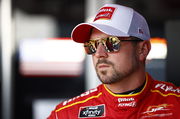
NASCAR President Kicks Up ‘SRX’ Firestorm With Courtroom Claim Fans Refuse to Accept
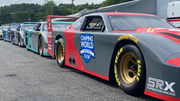
NASCAR World Exhales as Star Drops Heartwarming Health Update Following Death-Defying Crash
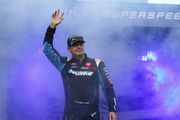
Dale Earnhardt & Tony Stewart Dethroned as SVG Shatters NASCAR Benchmark to Stand Alone in History
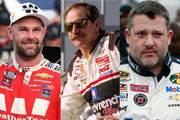
How Much Are Jurors Paid in the NASCAR Antitrust Trial? Federal Compensation Rules Explained
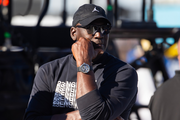
ADVERTISEMENT
NASCAR charter lawsuit has 23XI Racing on the edge
23XI Racing, co-owned by Denny Hamlin and Michael Jordan, is at the center of NASCAR’s ongoing charter dispute. Unlike most Cup teams, 23XI refused to sign NASCAR’s new charter agreement. They joined Front Row Motorsports in an antitrust lawsuit that argues the system restricts competition. A federal court recently vacated the injunction that had allowed both teams to keep their charters during the case. This left their guaranteed entries and payouts in jeopardy.
NASCAR quickly informed the 13 charter-holding teams that they could receive a financial windfall if the court sides against 23XI and FRM. President Steve Phelps told teams they would split an extra $15 million in payouts. That is about $832,000 per charter. This would be redirected from money previously set aside for the two holdouts.
23XI’s attorneys dismissed NASCAR’s move as a divide-and-conquer tactic. Antitrust lawyer Jeffrey Kessler argued the letter was meant to fracture unity among teams. The intent was to distract from what he called NASCAR’s “monopolistic practices.” Hamlin has also stood firm, insisting that the lawsuit was not just about his team but for reshaping the financial future of the sport for all competitors.
ADVERTISEMENT
“In the end, it’s because you’re threatening the status quo and threatening people’s jobs and things like that. I hope it’s not seen that way, just seeing that this is certainly an opportunity for us to try to promote change in the sport that’s positive for everyone. And that’s teams, drivers, fans, everyone,” said Hamlin.
Without charter protection, 23XI faces significant risks. Drivers like Bubba Wallace and Tyler Reddick could be forced to qualify on speed if fields are oversubscribed. Meanwhile, the team loses access to reliable revenue. With NASCAR already signaling plans to reassign disputed charters, December’s trial could define whether 23XI emerges as a reformer or is left scrambling to secure its place on the grid.
ADVERTISEMENT
ADVERTISEMENT
ADVERTISEMENT

